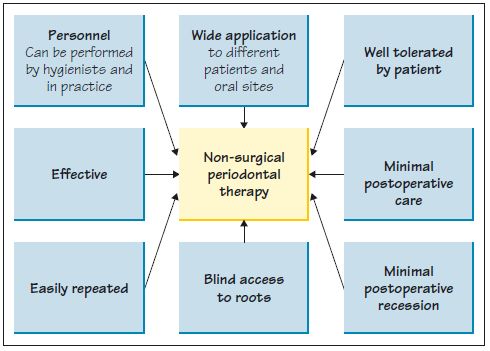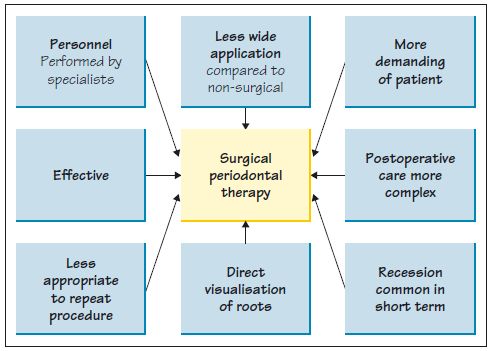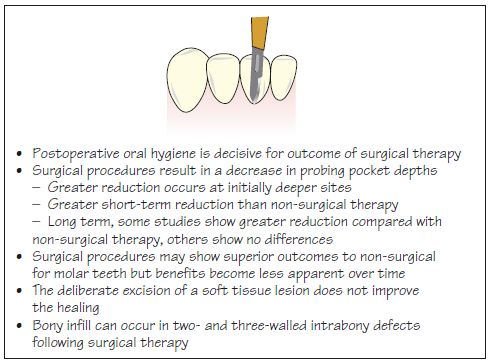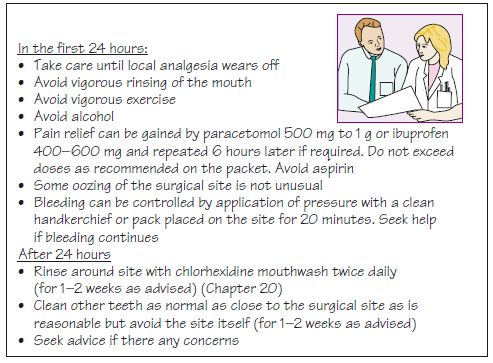24
Periodontal surgery
Figure 24.1 Advantages and disadvantages of non-surgical periodontal therapy.

Figure 24.2 Advantages and disadvantages of surgical periodontal therapy.

Figure 24.3 Clinical outcomes of surgical therapy.

Figure 24.4 Postoperative instructions to patients.

As described in Chapter 22, non-surgical root surface instrumentation is effective in controlling periodontal disease in many situations. Nonetheless there are limitations as to what can be achieved and in specific circumstances surgical techniques have a role to play in disease management (Figs 24.1, 24.2). Non-surgical techniques are generally most effective in shallow and moderate pockets and less so in deep pockets (greater than 6 mm). However, there is no absolute cut-off depth of pocket at which non-surgical debridement is ineffective. Nonsurgical therapy may be unable to achieve thorough root debridement if there is reduced access to a pocket or if furcation defects or root grooves are present.
Thorough non-surgical therapy should be used in the first instance and the outcome assessed. If a site fails to respond to non-surgical debridement (indicated by suppuration, bleeding, loss of attachment, or persistent or increasing pocketing) it may be amenable to surgical intervention (Fig. 24.3).
Periodontal surgery can be used to:
Access to a site for d/>
Stay updated, free dental videos. Join our Telegram channel

VIDEdental - Online dental courses


